Painting for Aircraft †
Abstract
:1. Introduction
2. Surface Preparation
3. Wording Explanation of Paint and Coating
4. Method:
4.1. Equipment and Painting Are Used in Royal Thai Navy’s Aircraft
5. Result
6. Conclusions
Acknowledgments
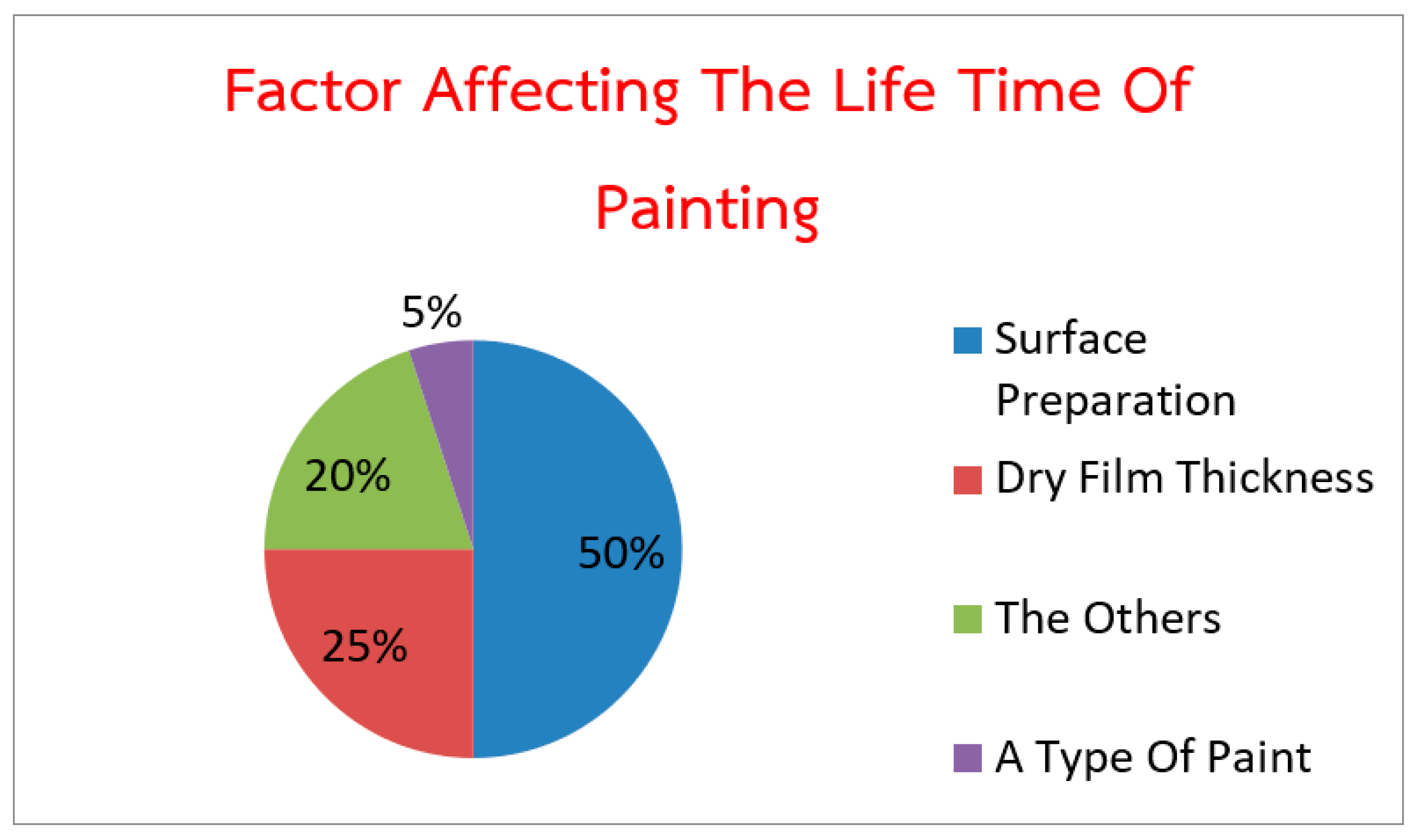

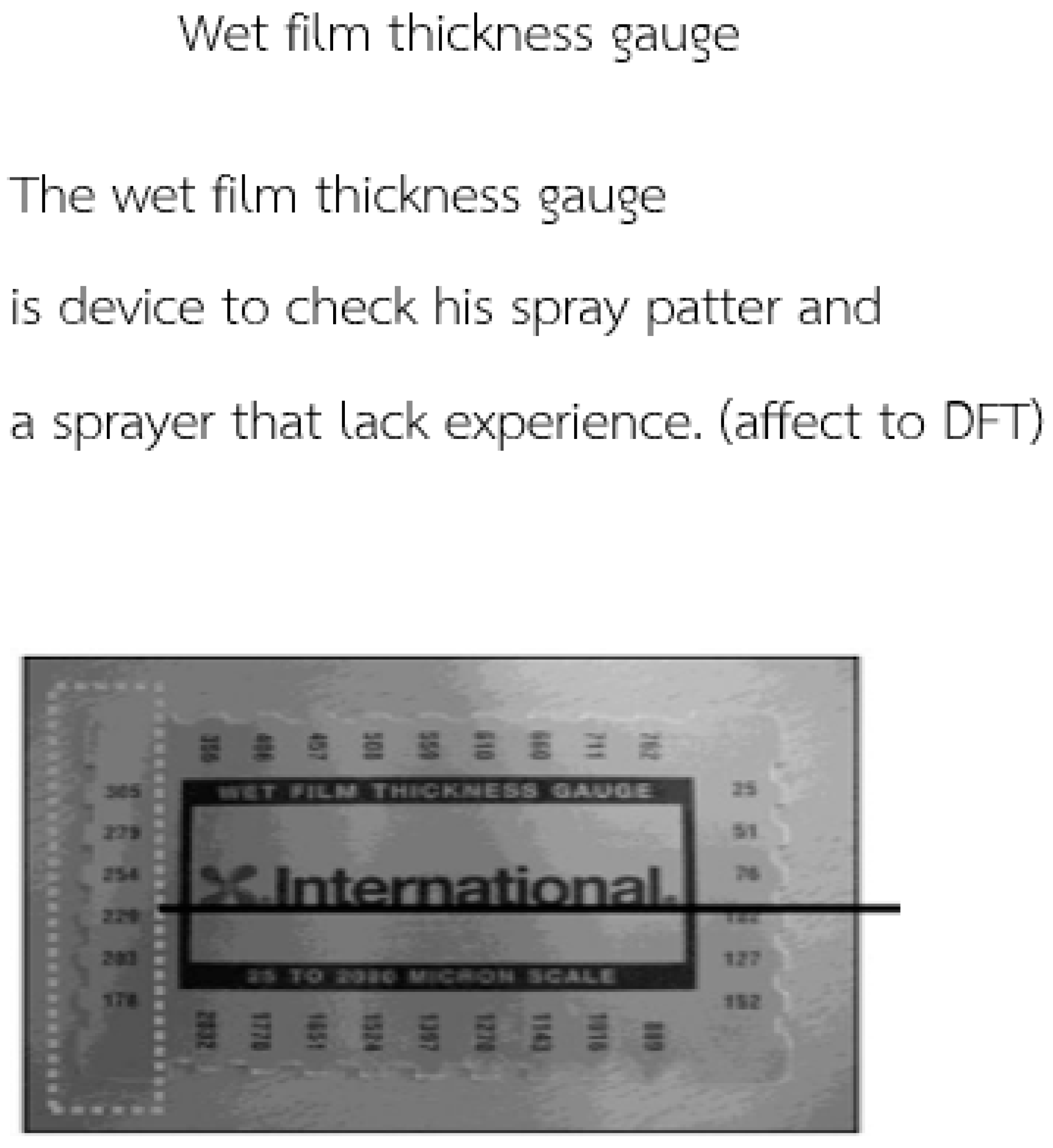
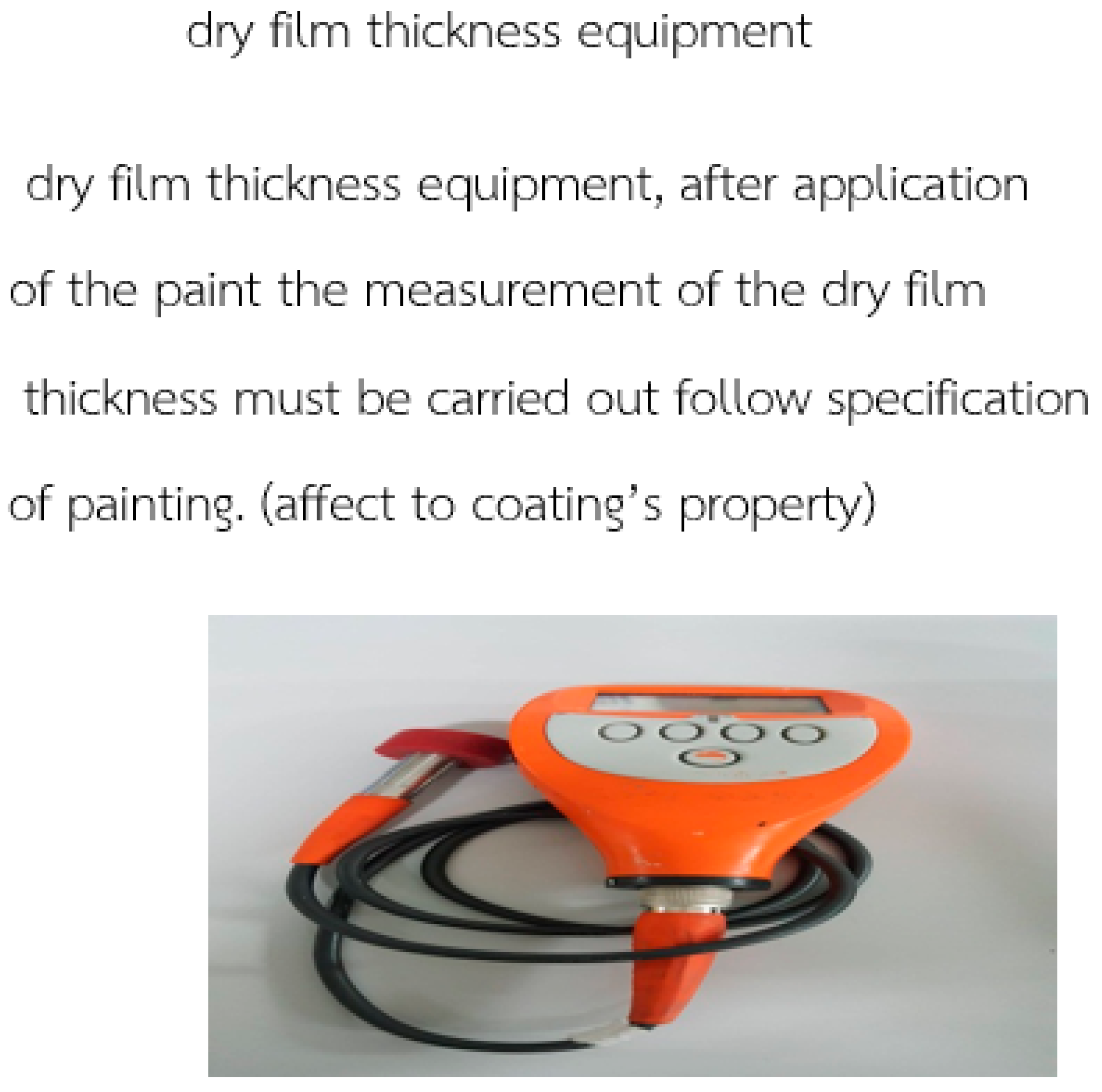
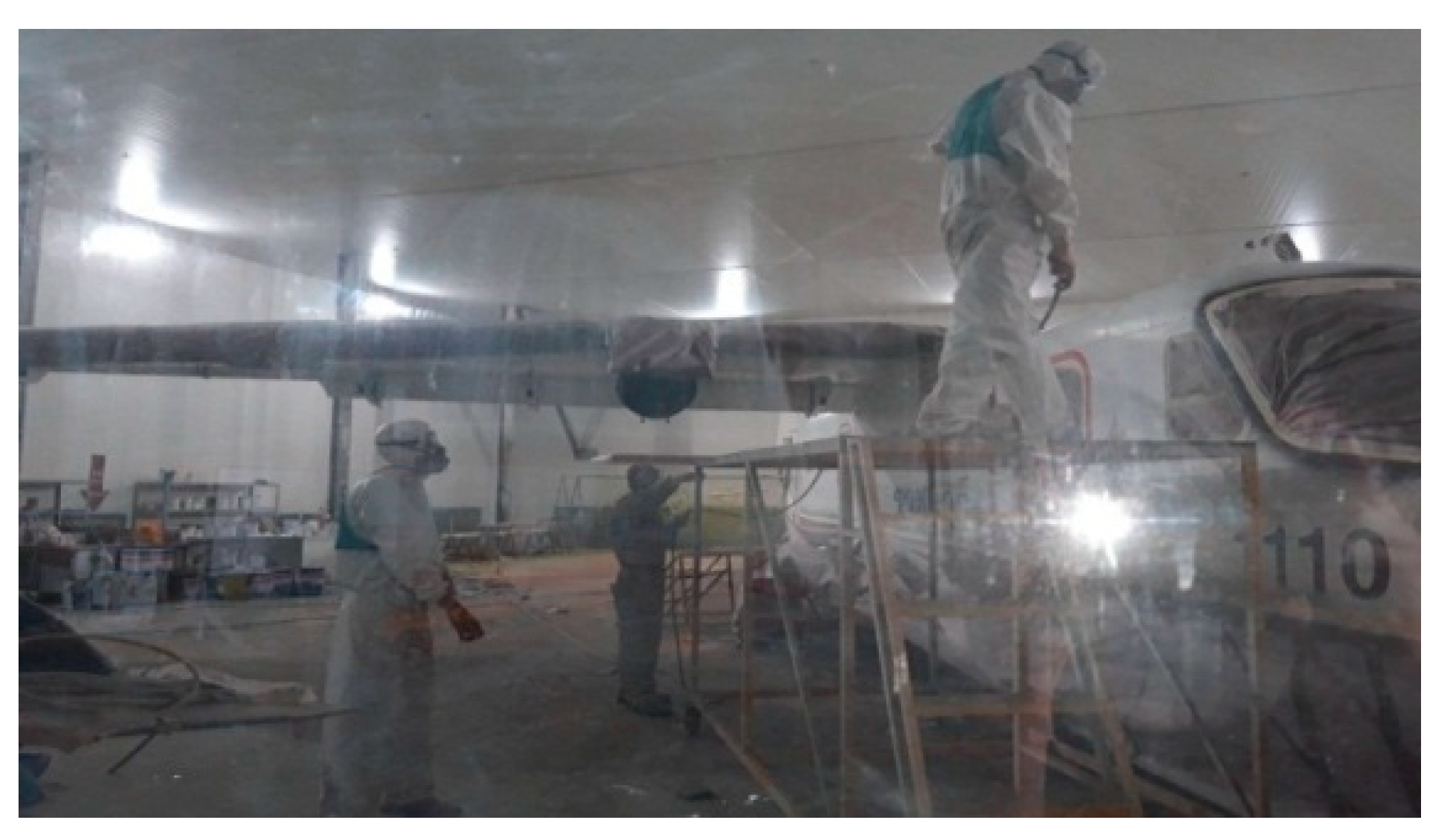
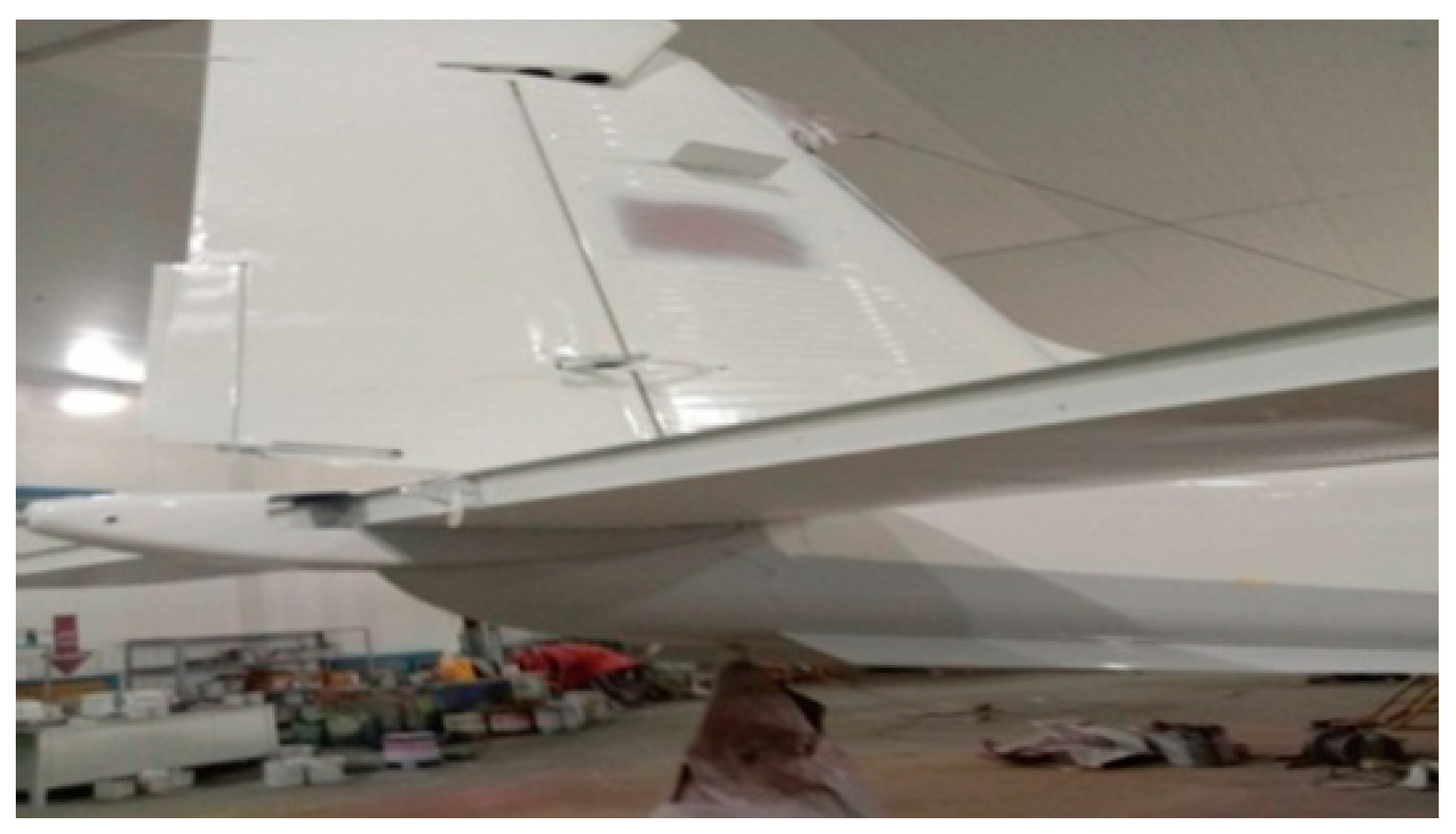
| Corrosion Factors and Progress According to Environment | ||
|---|---|---|
| Environment | Corrosion Factors | Corrosion Rate |
| Offshore | Sun energy (UV, temperature), salt particle, salt | 100 |
| Industry | Corrosion gas (acid gas), density of medicine, temperature, moisture | 20~30 |
| Mountain | Between Dryness and wetness, rain, snow, type of inhabit organism | 10~20 |
| Dope (per DON 788) | |
|---|---|
| Basic components (LCM No.476) | 1 Volume part |
| Thinner (LCM No.477) | 1 Volume part |
| Processing time | 5 pprox. 5 h at 23 C |
| Spray application | ½ cross-coat |
| Intermediate drying time | Min. 1 h (after 1st. and 2nd. Layer)Min 1½ h (after 3rd. Layer) |
| Layers | 4 |
| Viscosity 4 mm ISO cup (with thinner) | 4 s at 20+ or −2 C |
| Viscosity 4 mm DIN cup (without thinner) | 195+ or −5 s at 20+ or −2 C |
| Apply 1st. dope layer | Basic component with thinner (mixing ratio 1:1 by volume) use a sponge or foam block apply ½ cross-coat, the dope must fully penetrate the polyester fabric |
| Apply 2nd. Thru 4th. Dope layer | Only basic component without thinner use a sponge or foam block apply 3 ½ cross-coat |
| Intermediate drying time min. 1 h after the 2nd layer min. ½ h the last min 8 h | |
© 2020 by the authors. Licensee MDPI, Basel, Switzerland. This article is an open access article distributed under the terms and conditions of the Creative Commons Attribution (CC BY) license (http://creativecommons.org/licenses/by/4.0/).
Share and Cite
Prapan, C.; Sukantarat, C.; Maneephrom, T. Painting for Aircraft. Proceedings 2019, 39, 21. https://doi.org/10.3390/proceedings2019039021
Prapan C, Sukantarat C, Maneephrom T. Painting for Aircraft. Proceedings. 2019; 39(1):21. https://doi.org/10.3390/proceedings2019039021
Chicago/Turabian StylePrapan, Cherdpong, Chinnawat Sukantarat, and Thanayot Maneephrom. 2019. "Painting for Aircraft" Proceedings 39, no. 1: 21. https://doi.org/10.3390/proceedings2019039021
APA StylePrapan, C., Sukantarat, C., & Maneephrom, T. (2019). Painting for Aircraft. Proceedings, 39(1), 21. https://doi.org/10.3390/proceedings2019039021




